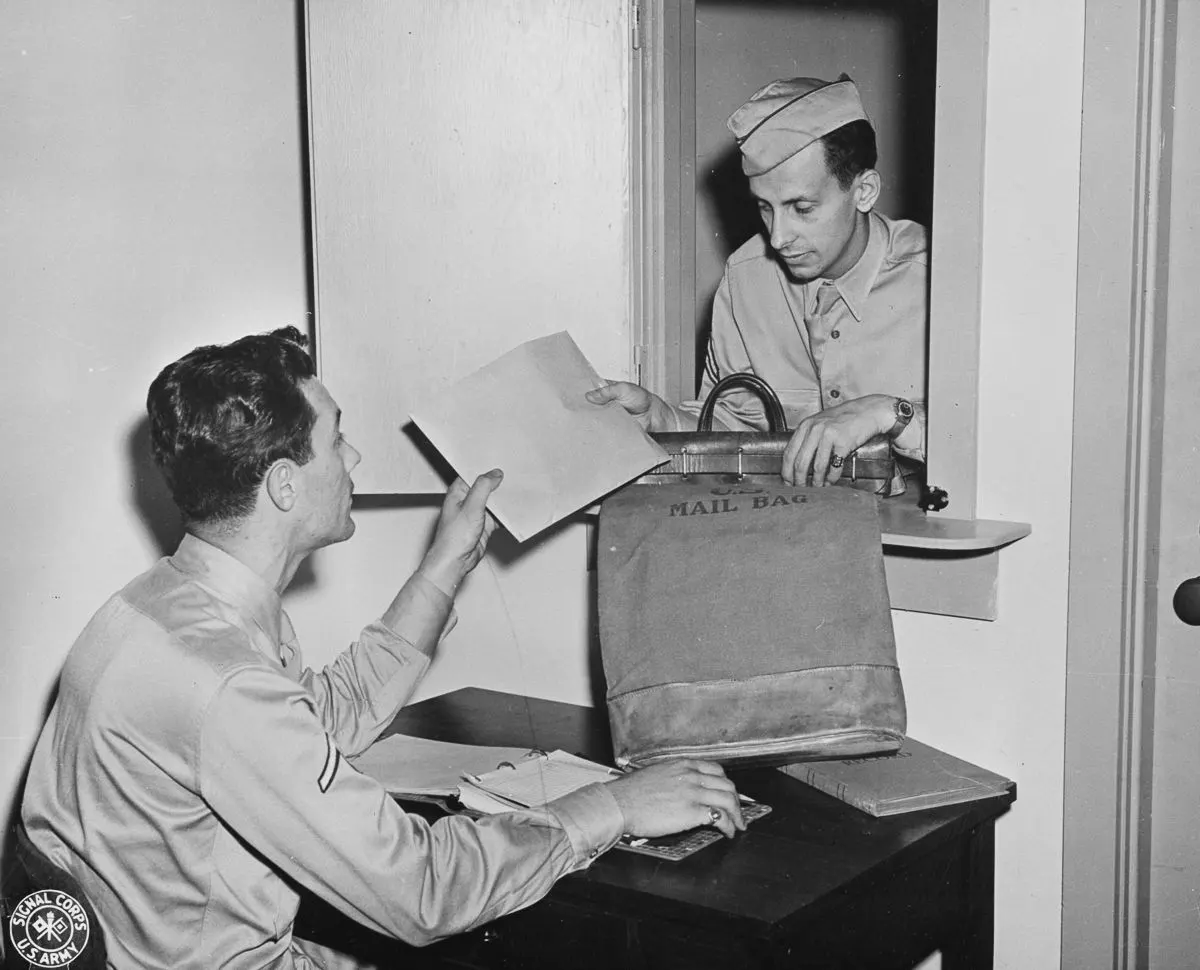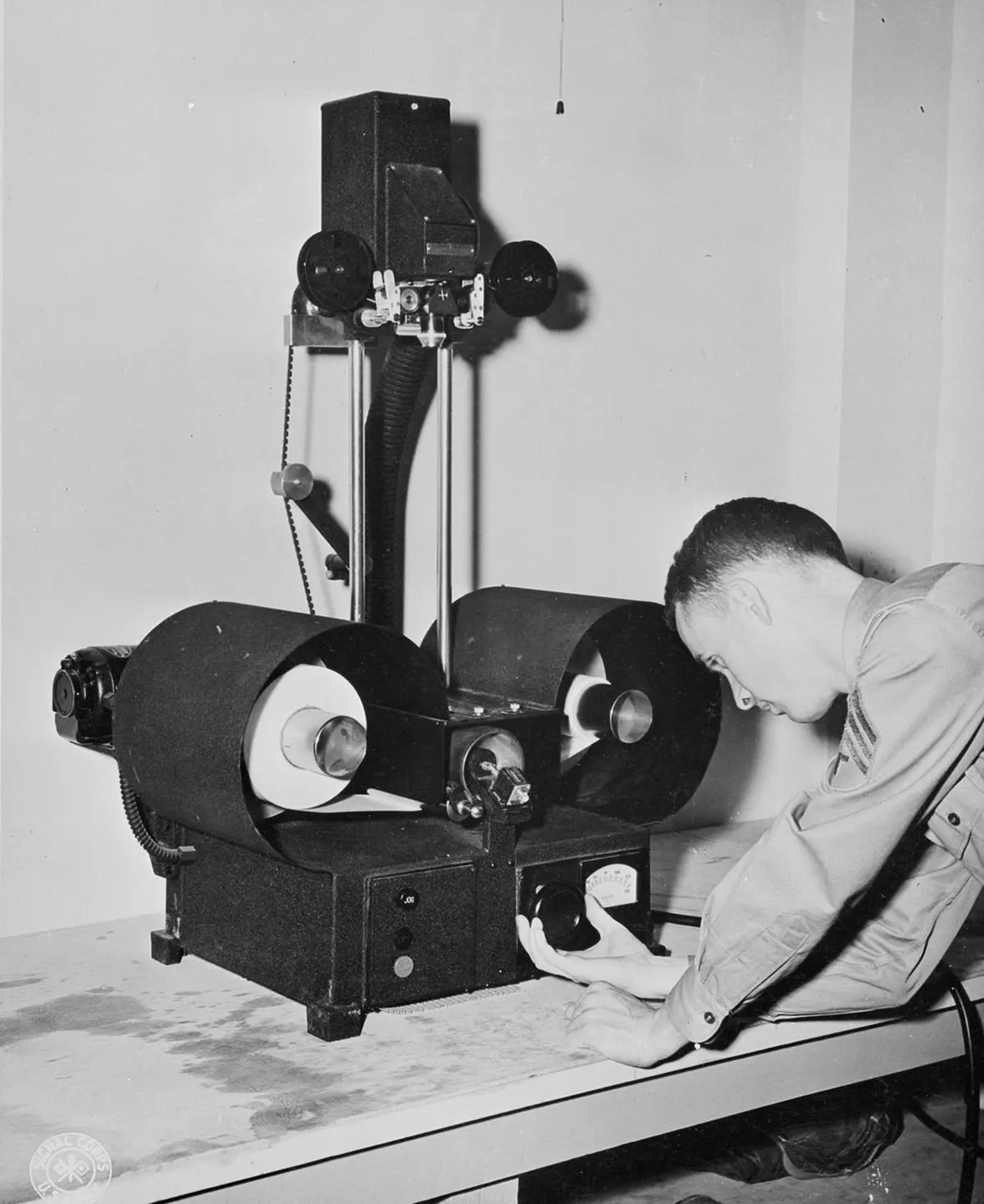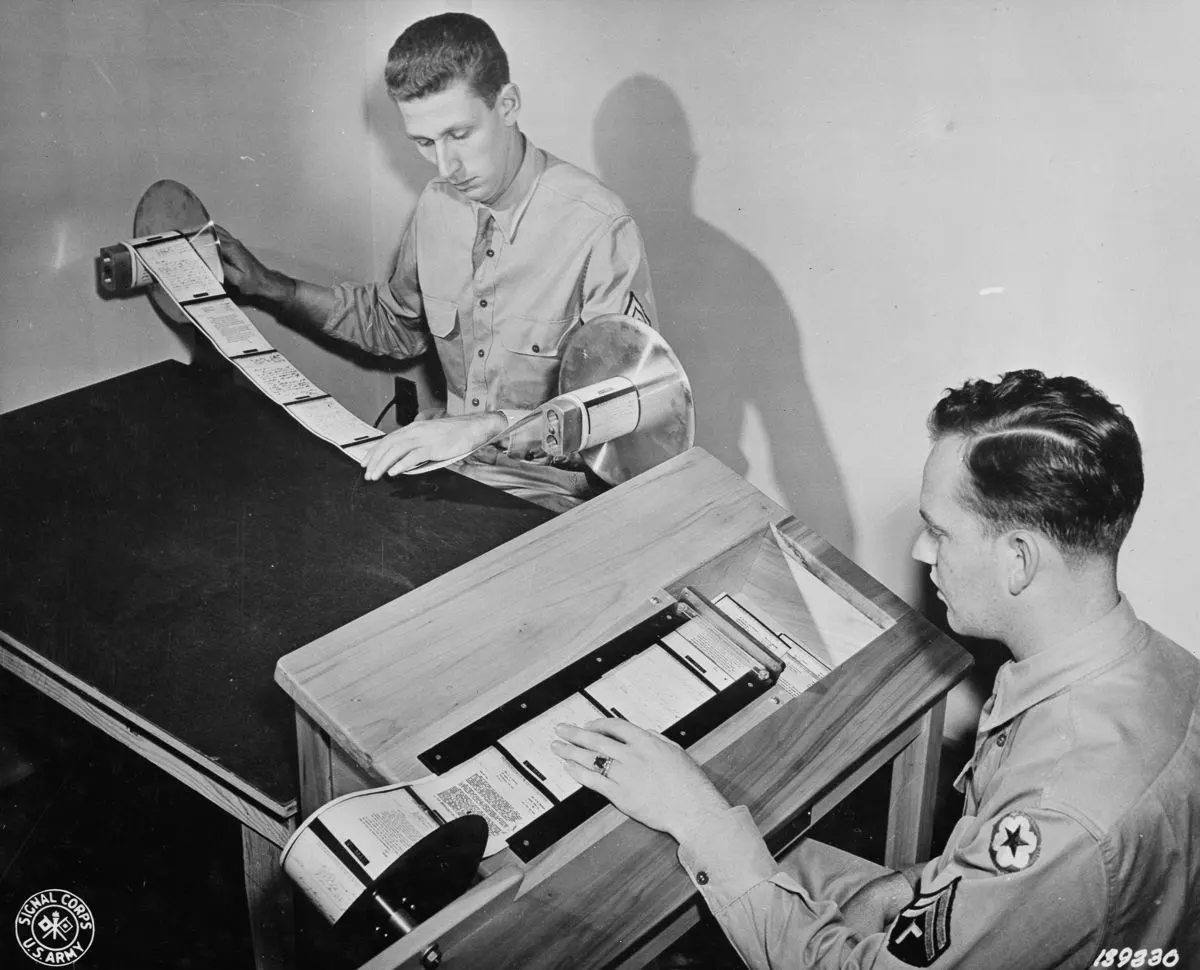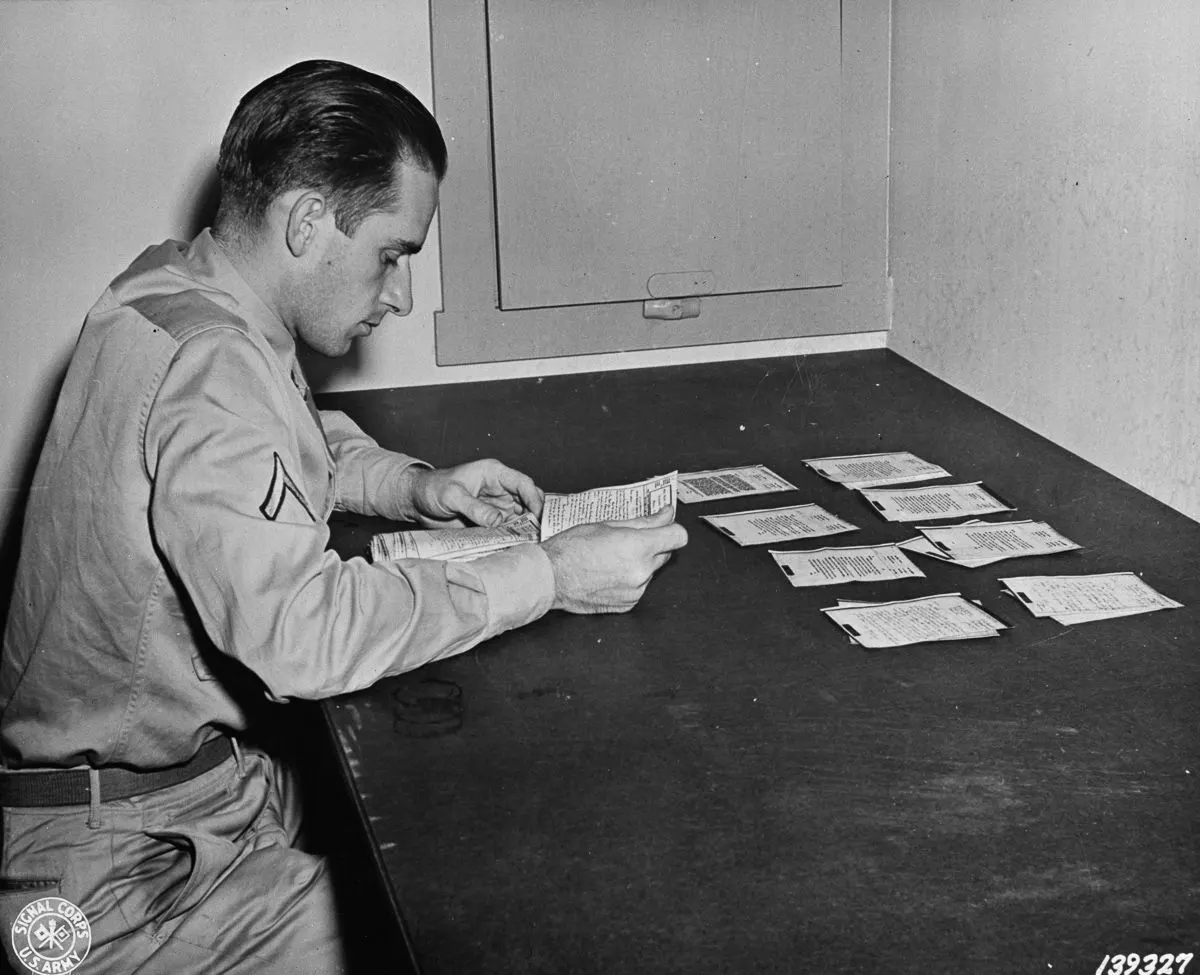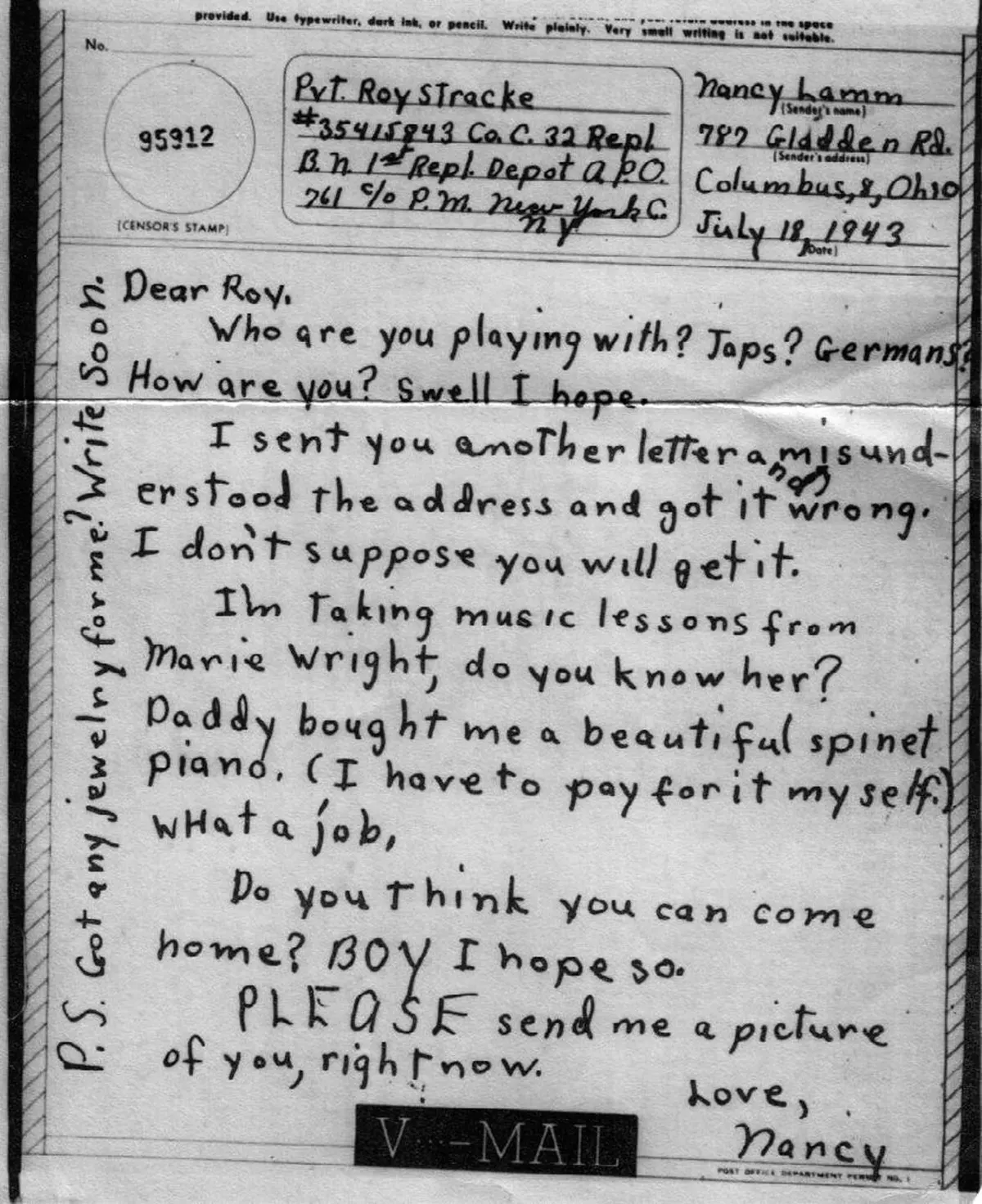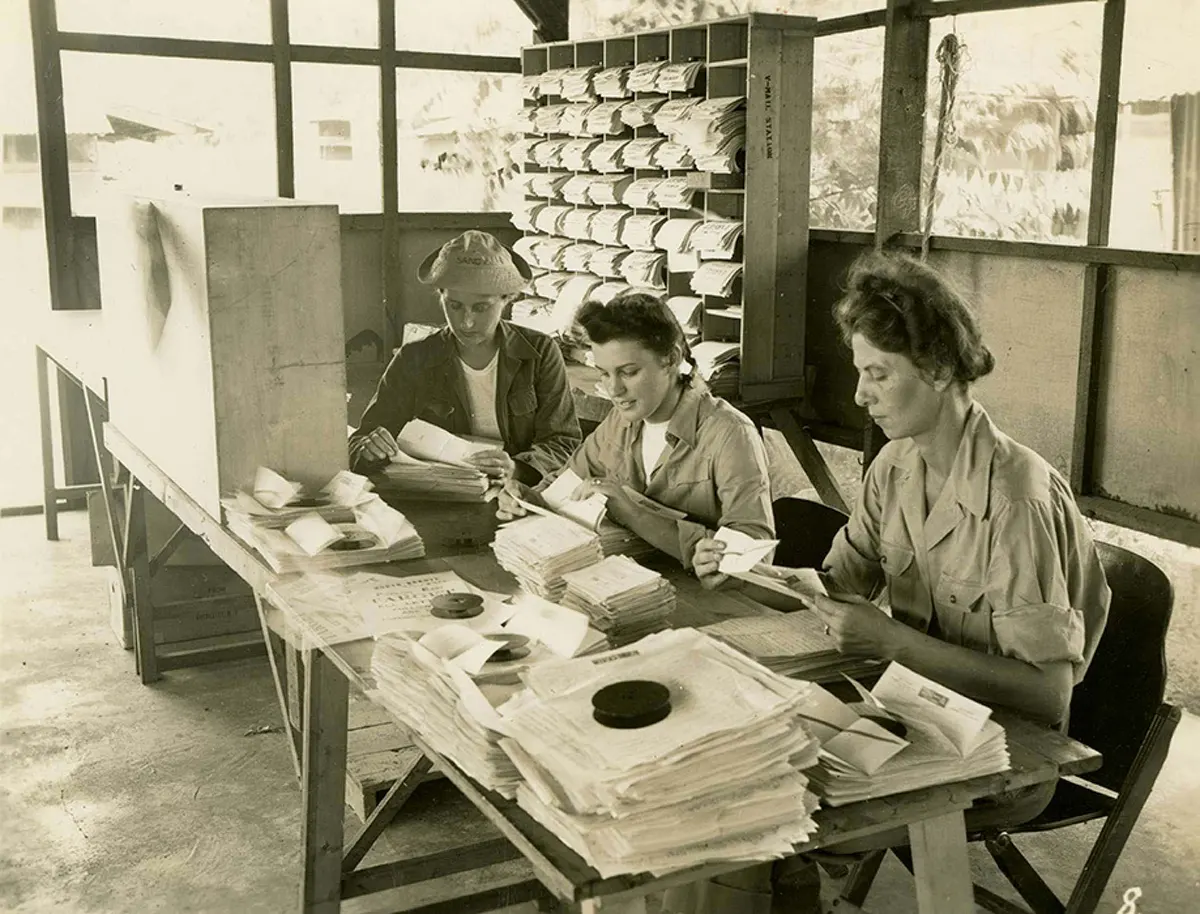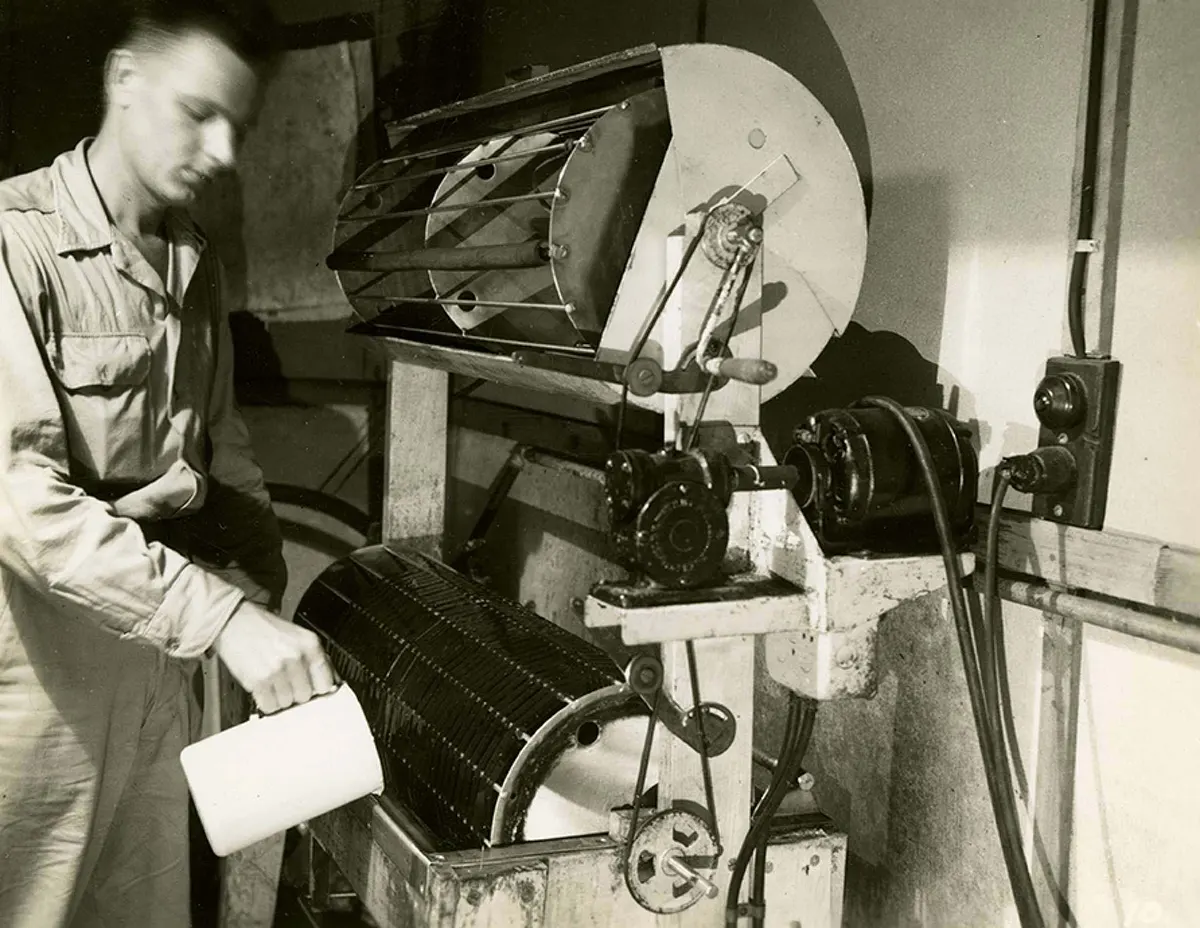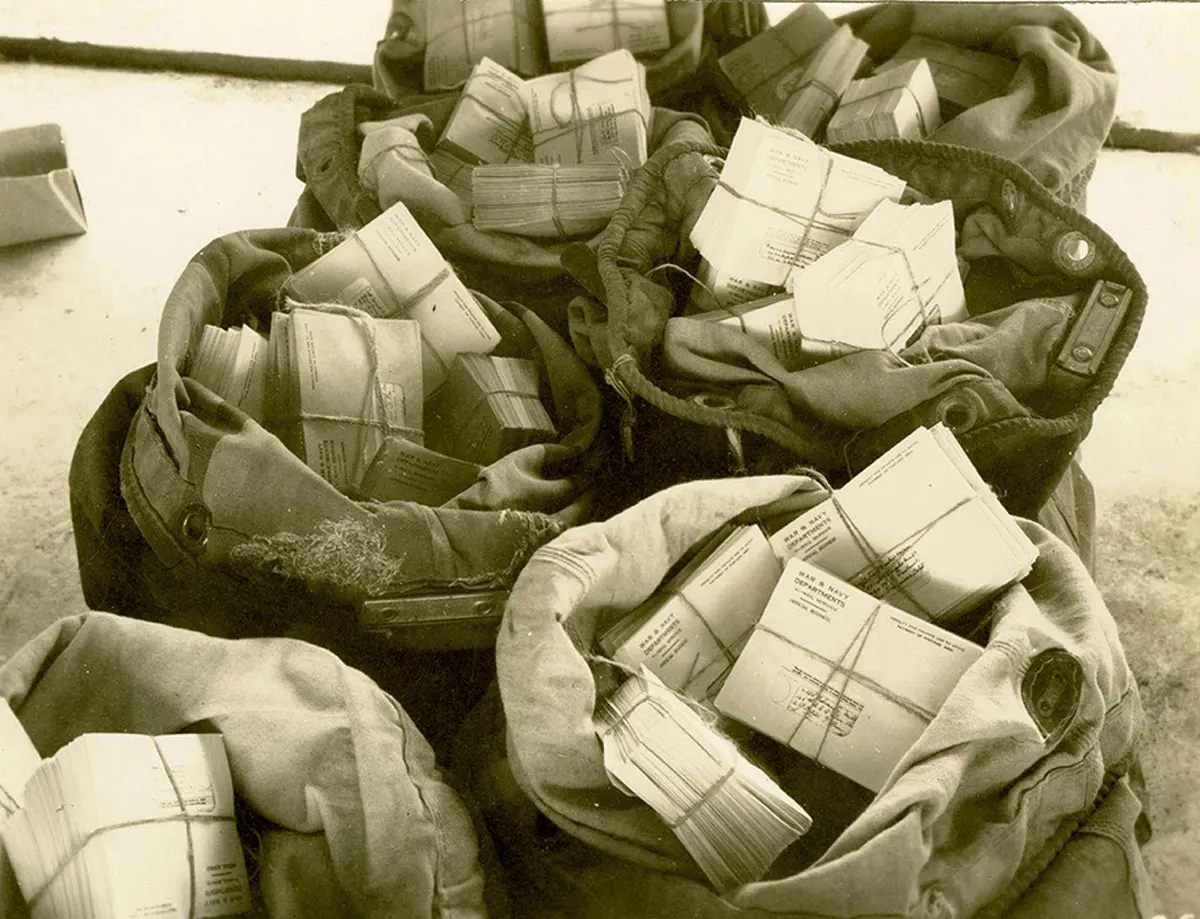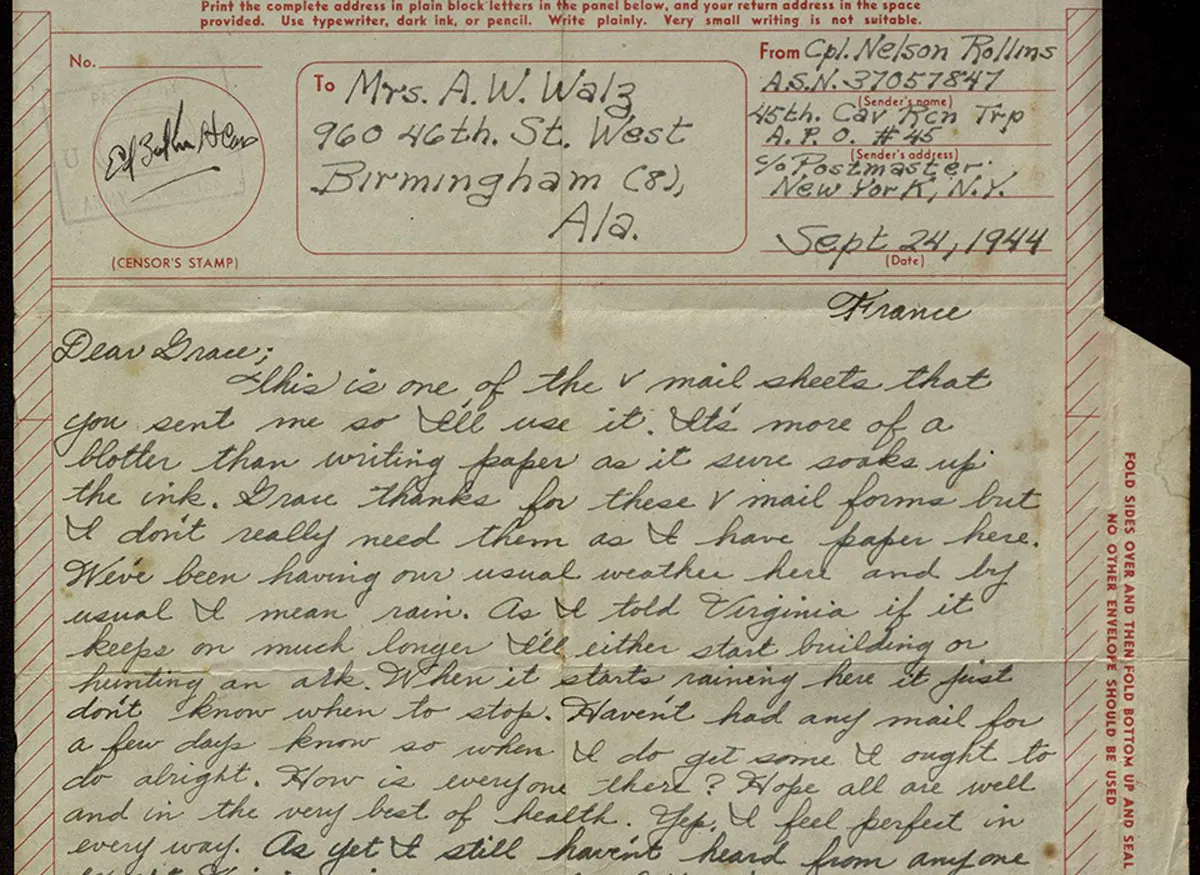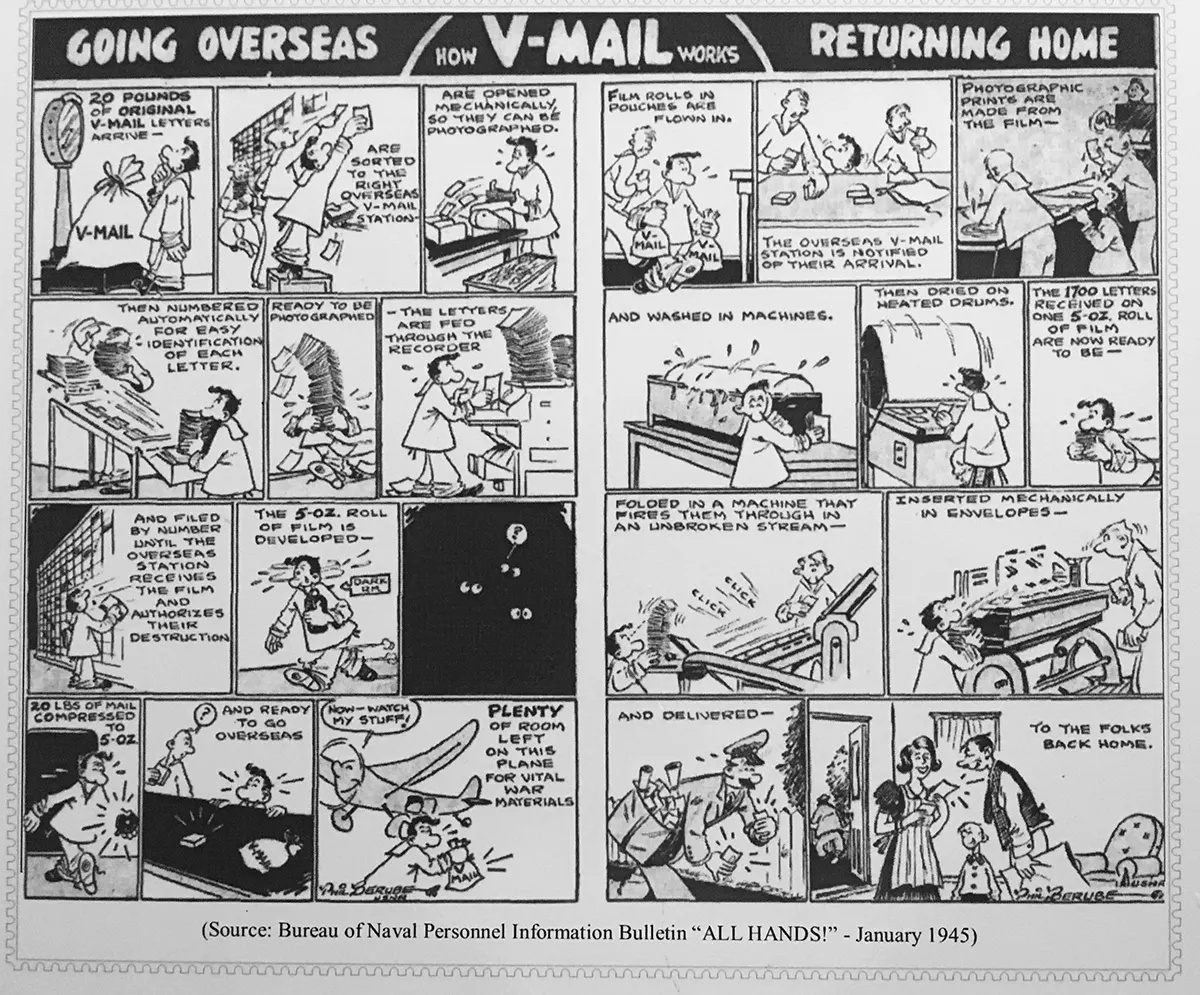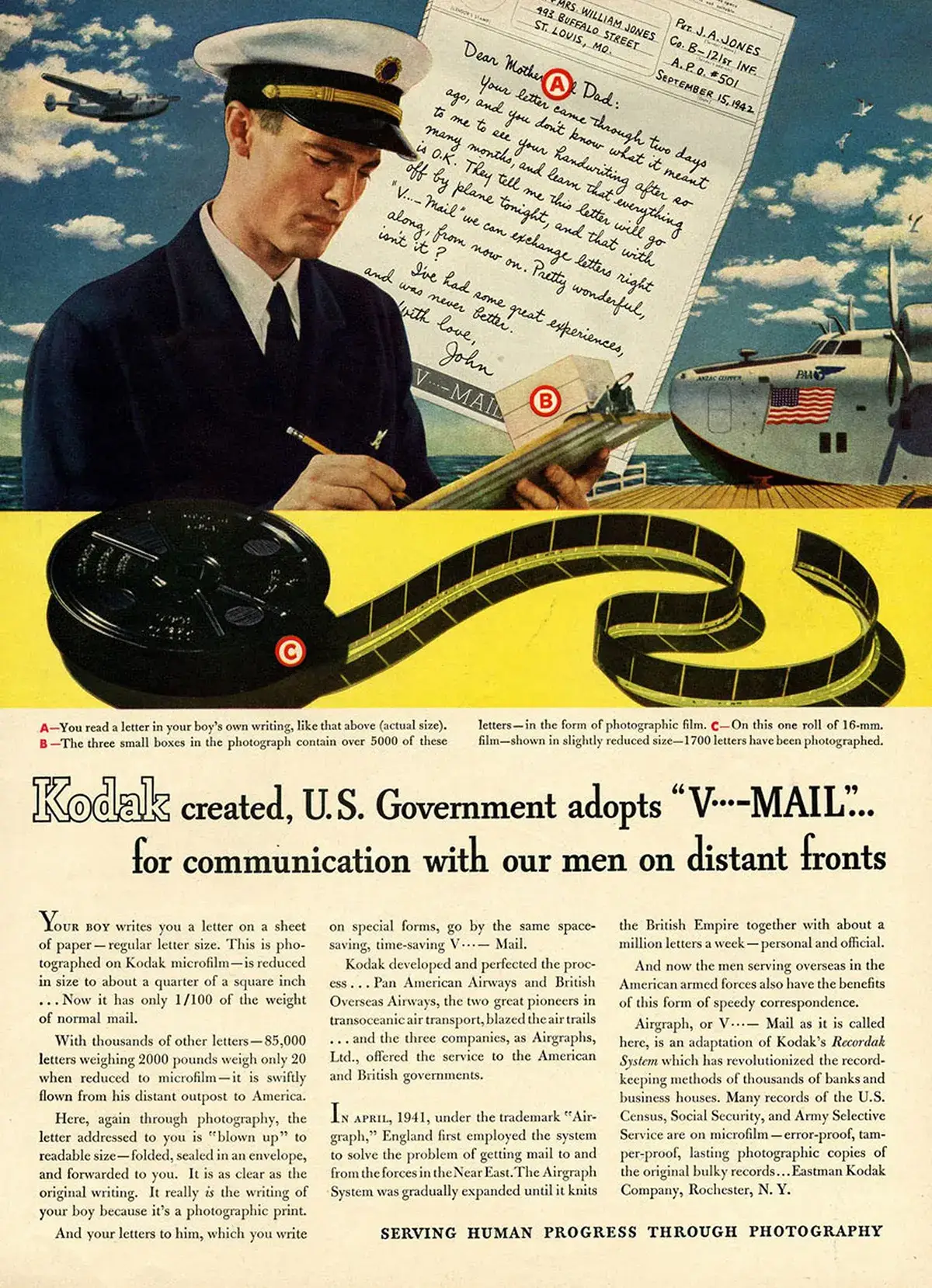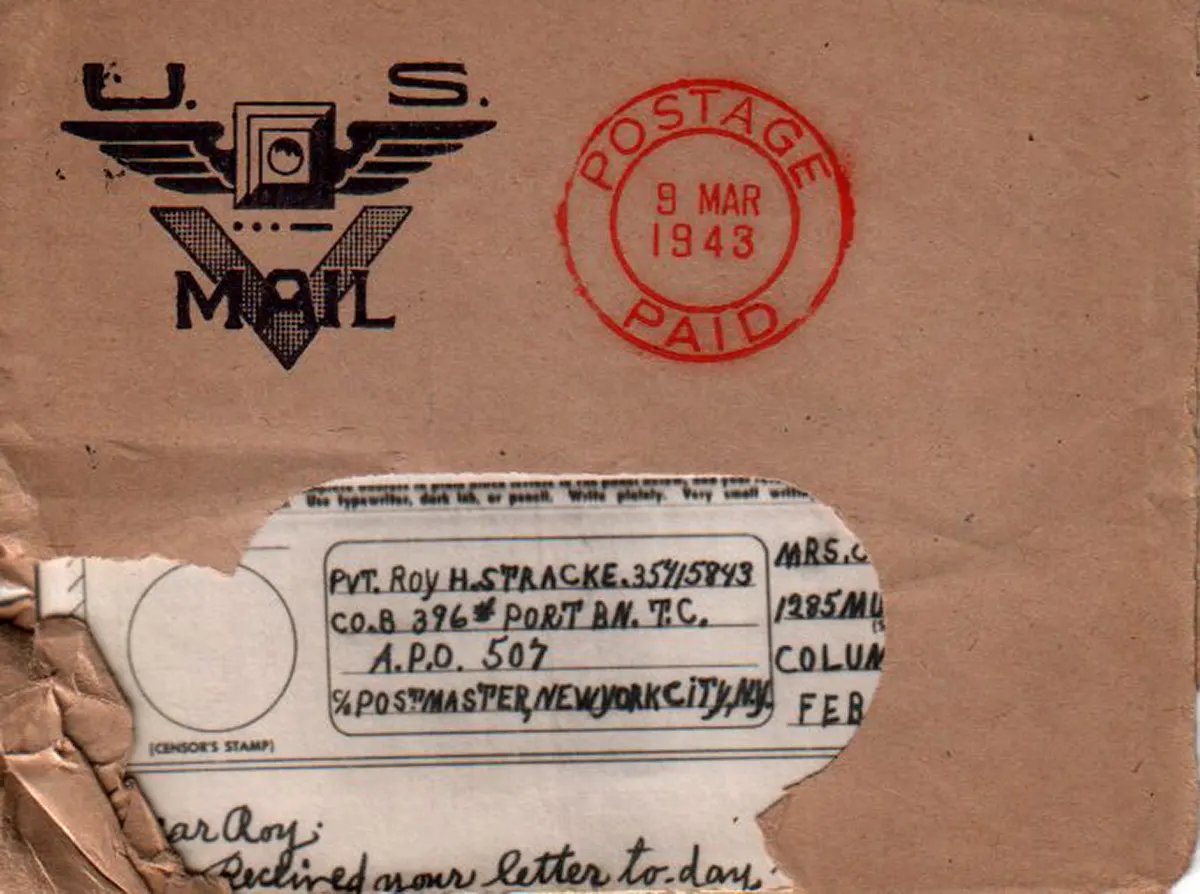Each letter received at home assured loved ones that their serviceman was still alive and well when he wrote that letter. For the troops, letters from home were the single biggest morale booster, and a force with high morale fights better. The logistical task of sending and delivering all these letters proved quite the challenge, especially when transporting the mail across the Atlantic Ocean. Mail sent via cargo ships was slow to arrive, taking up to a month. But the alternative of sending mail via cargo planes, taking less than two weeks, was expensive. Moreover, cargo space on these planes was at a premium (for critical weapons and supplies), and letters were bulky both in weight and in the space that they took up. In searching for a way to address this problem, the military postal service turned their eyes to the British “Airgraph”. The airgraph was invented in the 1930s by the Eastman Kodak Company in conjunction with Imperial Airways (now British Airways) and Pan-American Airways as a means of reducing the weight and bulk of mail carried by air. Letters would be written on premade forms, these forms would be censored and scanned onto microfilm, the microfilm would be transported by plane, and on arrival, the letters would be printed onto photo paper and delivered. The US military postal service adopted this process renaming it “Victory Mail”, or “V-Mail” for short, and it proved extremely effective. The savings of this system were enormous; 2500 pounds of paper letters in 37 mail sacks could be condensed into only 45 pounds of film in one mail sack. In turn, this freed up room for more materiel to supply the war effort. The US further reduced waste by only printing the letters at 60% scale. The use of V-mail also inadvertently deterred espionage; as only photocopies of letters were being sent, invisible ink and microdots were rendered useless. Although the V-mail system was only used between June 1942 and November 1945, over 1 billion items were processed through these means. An important part of the V-mail system was the use of a standardized stationery which combined the letter and envelope into one piece of paper. Even without microfilming, this was a great space-saving measure. The form was a sheet specially designed by the Government Printing Office and was provided free of charge by the Post Office at the rate of two sheets per person per day. The way one wrote on the letter also played a big part in whether one would ultimately be able to read the reduced version. Users of V-mail were instructed: “Use typewriter, dark ink, or dark pencil. Faint or small writing is not suitable for photographing.” The original forms could accommodate up to 700 typed words. V-Mail had its drawbacks. It was somewhat limiting in that only a certain number of words could be used. Since the photo prints were ¼ size of the original letter, if the print was too small then the final product was unreadable. Some stores actually sold special “V-mail readers,” magnifying glasses so that readers could decipher the reduced print. Another downside of V-mail is that one also couldn’t send enclosures (at least initially) and could not leave a personal imprint in the form of a lipstick kiss on the paper. Lipstick was referred to as the “scarlet scourge,” because it would gum up the machines used to film the letters. Despite its faults, V-mail was aided by marketing which branded the use of V-mail as a patriotic duty and the use of the service picked up over the years. There is no denying that the V-mail practice saved vital shipping space.
(Photo credit: Library of Congress / US Army Archives / Smithsonian Museums / The National WWII Museum New Orleans; Mail Call: V-mail by Kim Guise). Notify me of new posts by email.
Δ Subscribe

